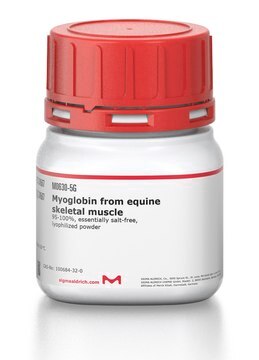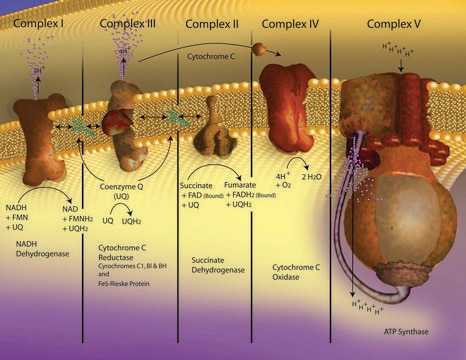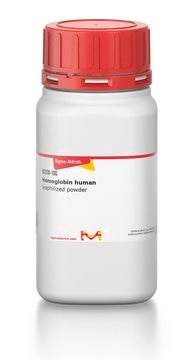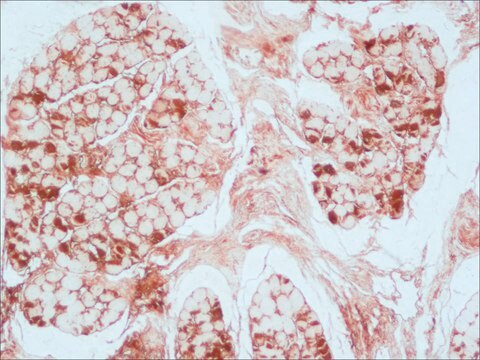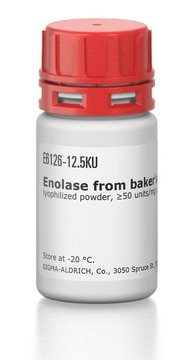M1882
Myoglobin from equine heart
≥90% (SDS-PAGE), essentially salt-free, lyophilized powder
Synonym(s):
Myoglobin from horse heart
About This Item
Recommended Products
biological source
equine heart
Quality Level
assay
≥90% (SDS-PAGE)
form
essentially salt-free, lyophilized powder
Iron content
≥0.20%
technique(s)
MALDI-MS: suitable
UniProt accession no.
storage temp.
−20°C
Gene Information
horse ... MB(100054434)
Looking for similar products? Visit Product Comparison Guide
Application
- spectral measurements in Beckman DU-50 or Gilford 2400 spectrophotometer
- the secondary structure analysis of proteins in H2O solution using single-pass attenuated total reflection Fourier transform infrared (ATR-FT-IR) microscopy
- the calibration of the mass scale at a concentration of 2 pmol/μL in Electrospray mass spectrometry
- a study to investigate on-line single droplet deposition for MALDI mass spectrometry
- a study to examine protein adsorption in fused-silica and polyacrylamide-coated capillaries
Biochem/physiol Actions
Storage Class
11 - Combustible Solids
wgk_germany
WGK 3
flash_point_f
Not applicable
flash_point_c
Not applicable
ppe
Eyeshields, Gloves, type N95 (US)
Certificates of Analysis (COA)
Search for Certificates of Analysis (COA) by entering the products Lot/Batch Number. Lot and Batch Numbers can be found on a product’s label following the words ‘Lot’ or ‘Batch’.
Already Own This Product?
Find documentation for the products that you have recently purchased in the Document Library.
Customers Also Viewed
Articles
In this study, we developed a rapid trypsin digest kit that, at elevated temperatures, yielded reliable, reproducible results in less than 2 hours on a wide variety of substrates for mass spectrometry.
Protocols
Separation of HPLC protein standard mixture, analytical standard
Chromatograms
application for HPLCOur team of scientists has experience in all areas of research including Life Science, Material Science, Chemical Synthesis, Chromatography, Analytical and many others.
Contact Technical Service